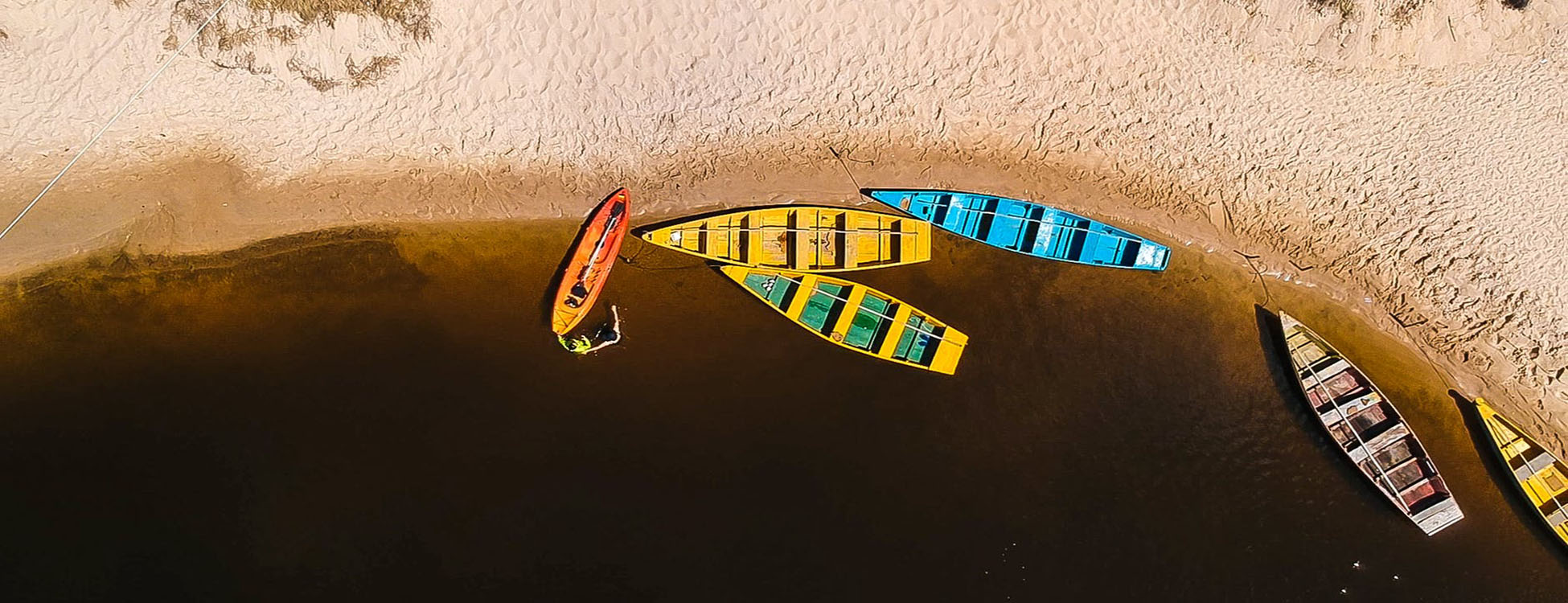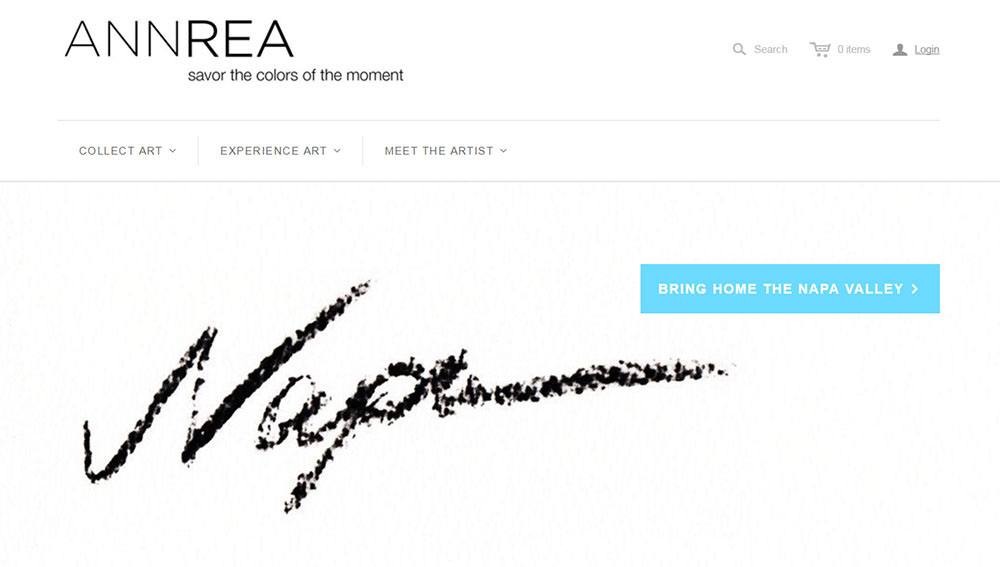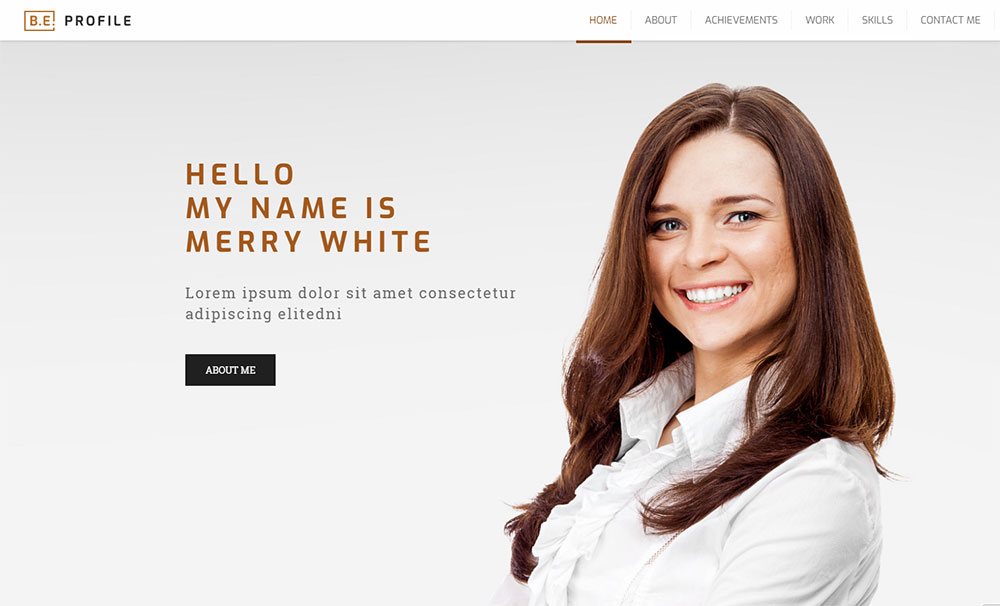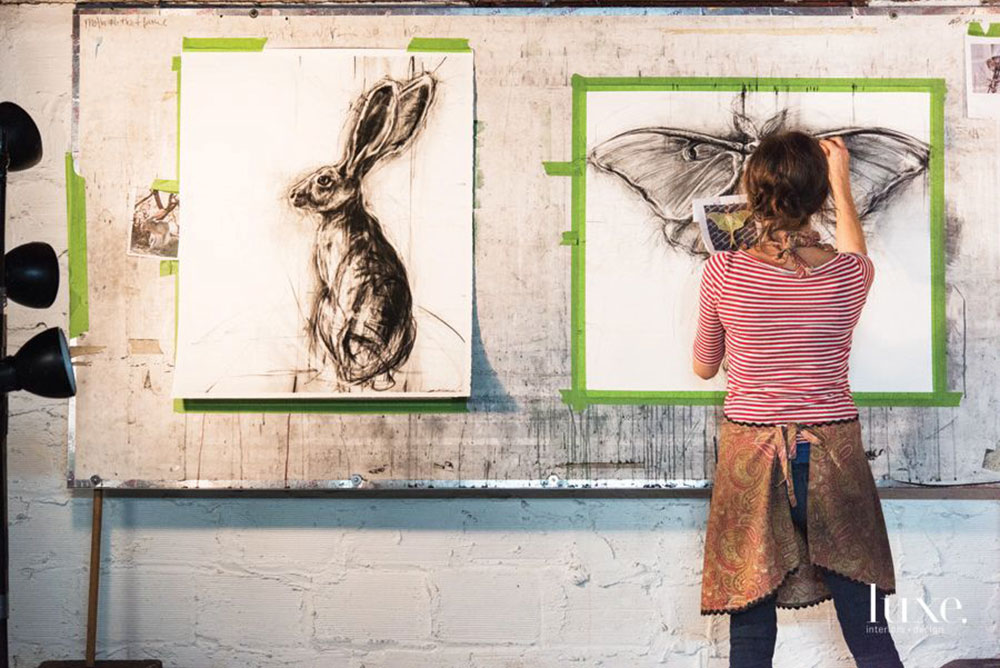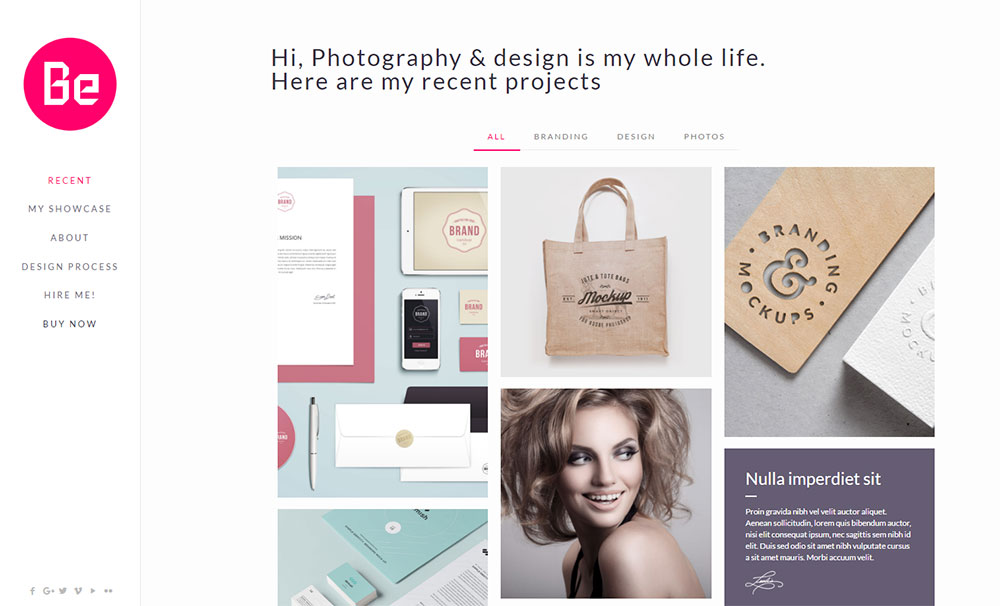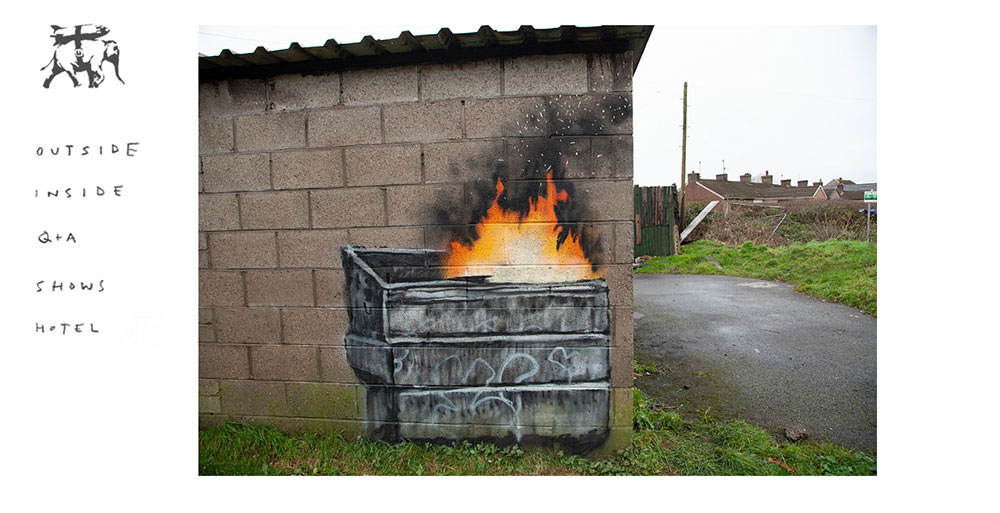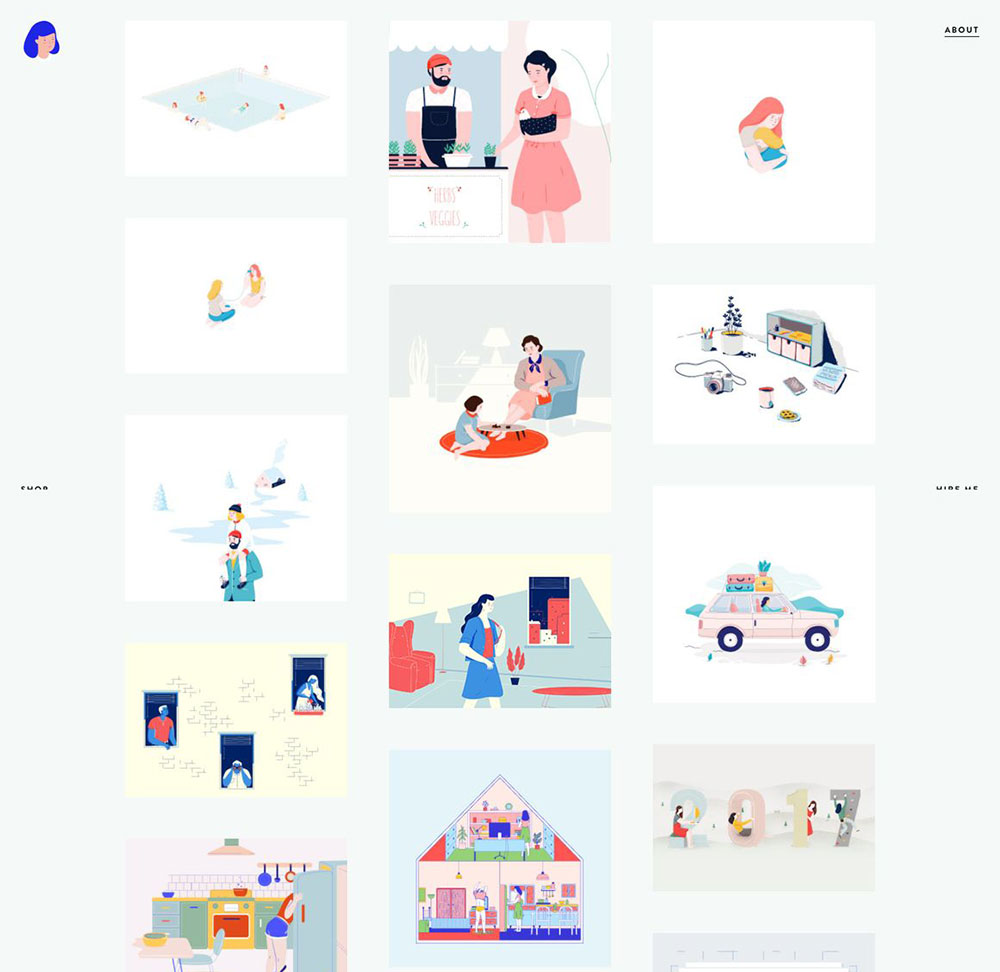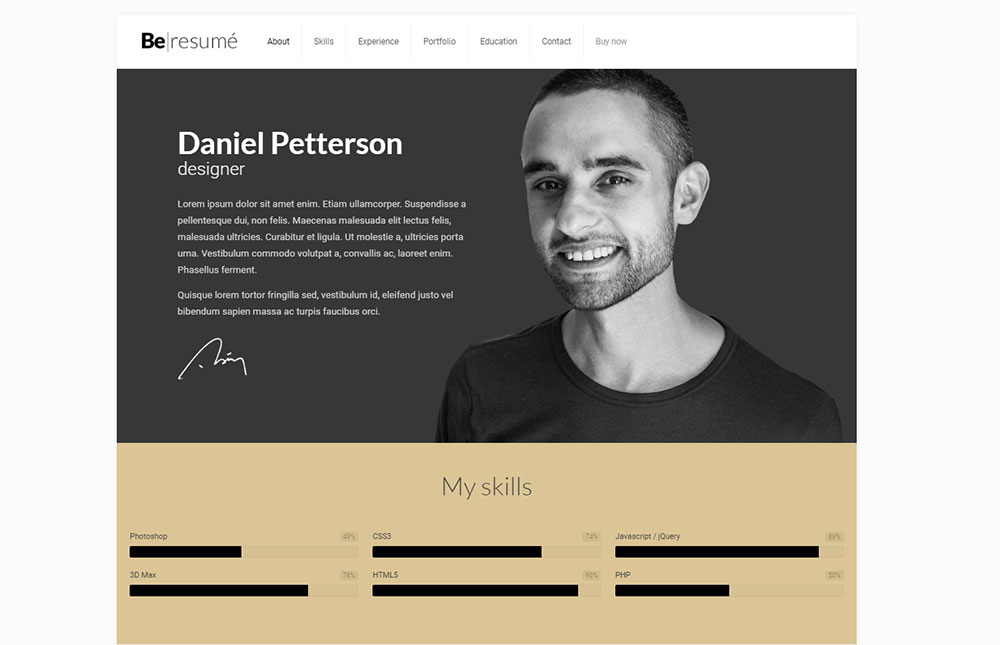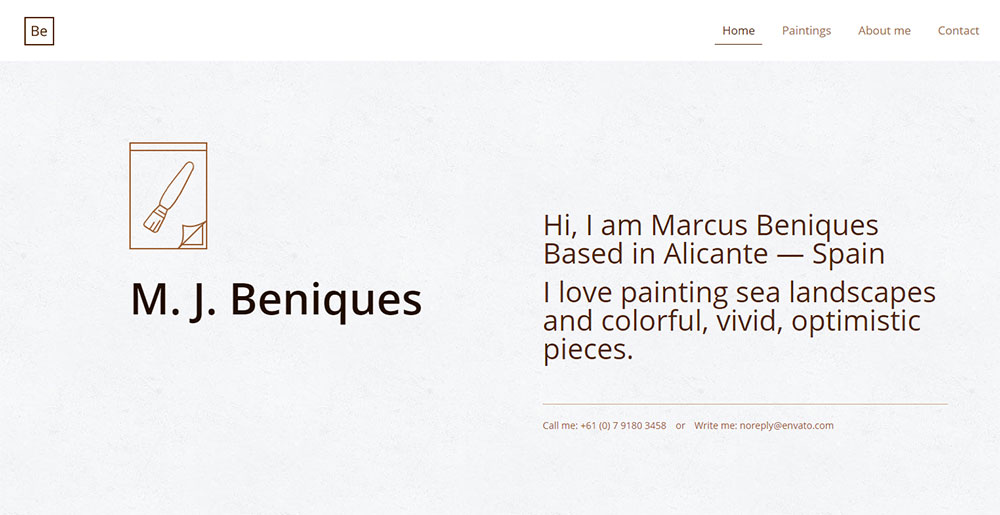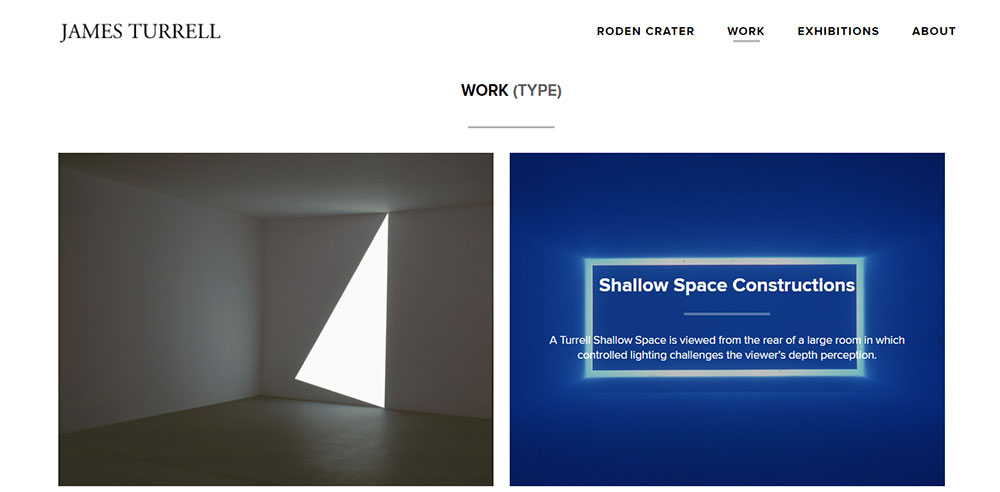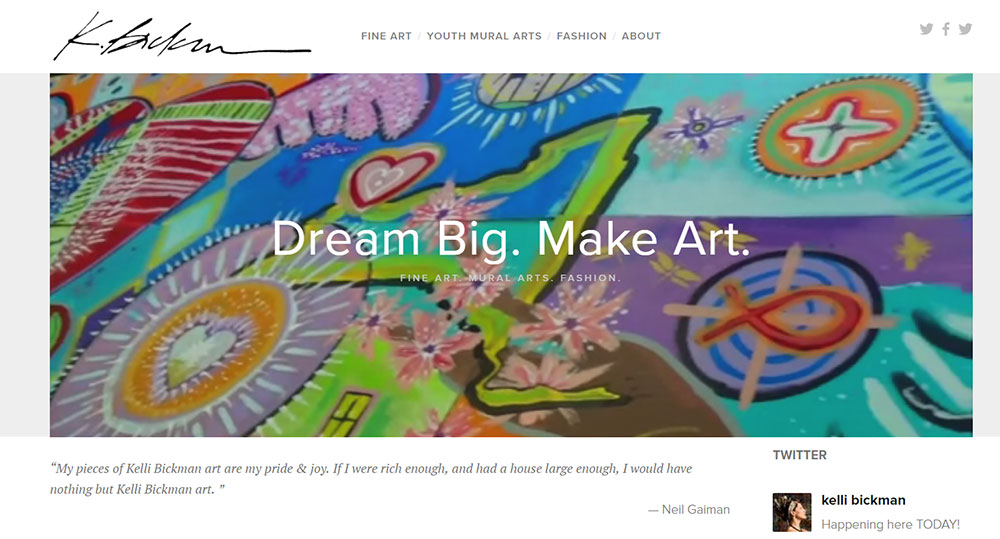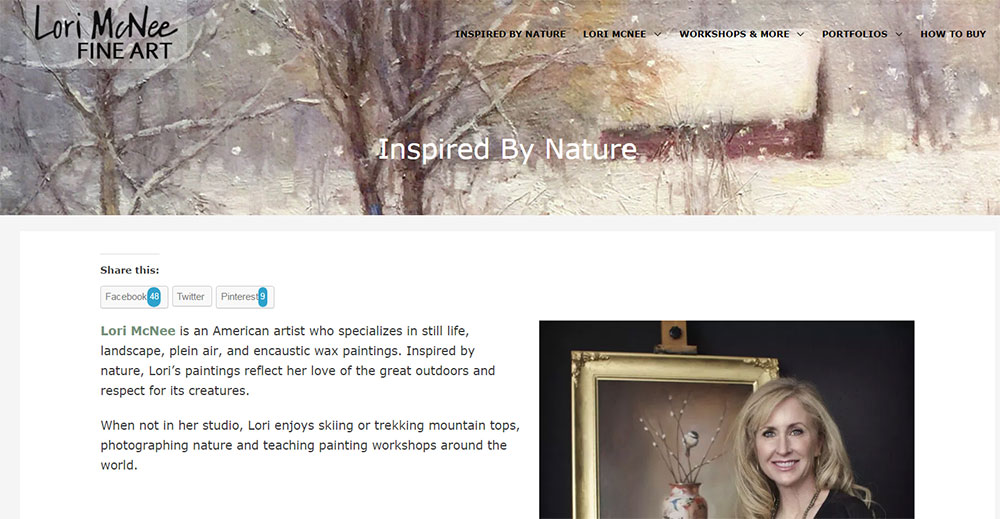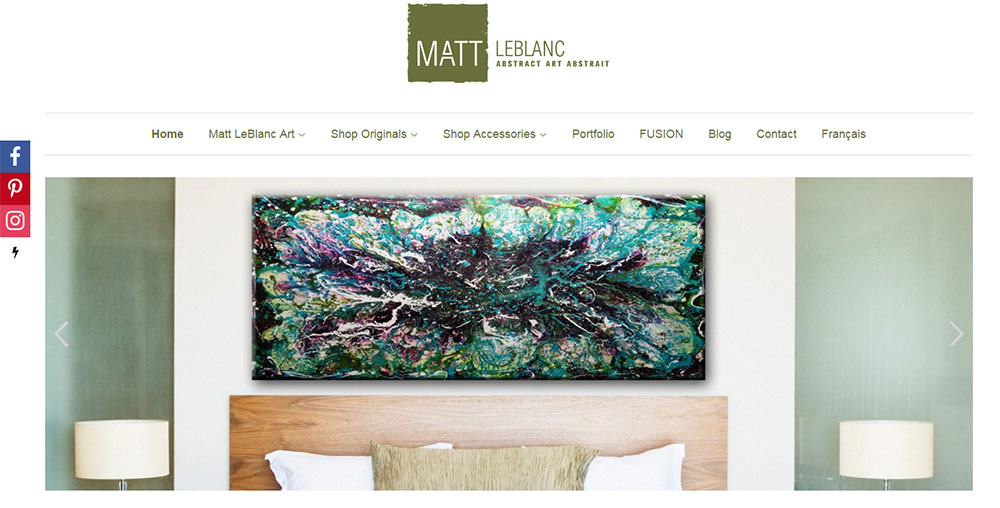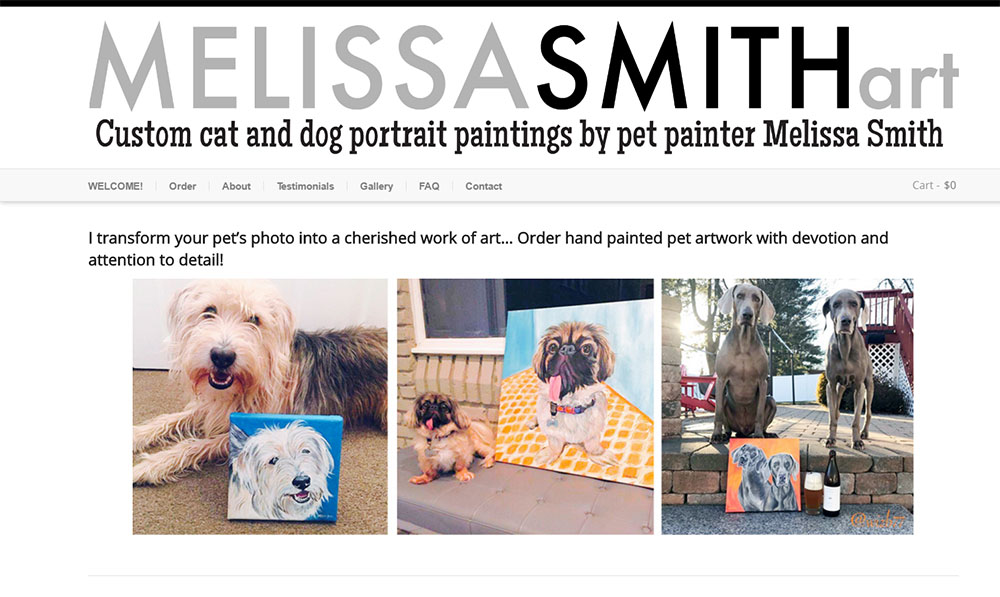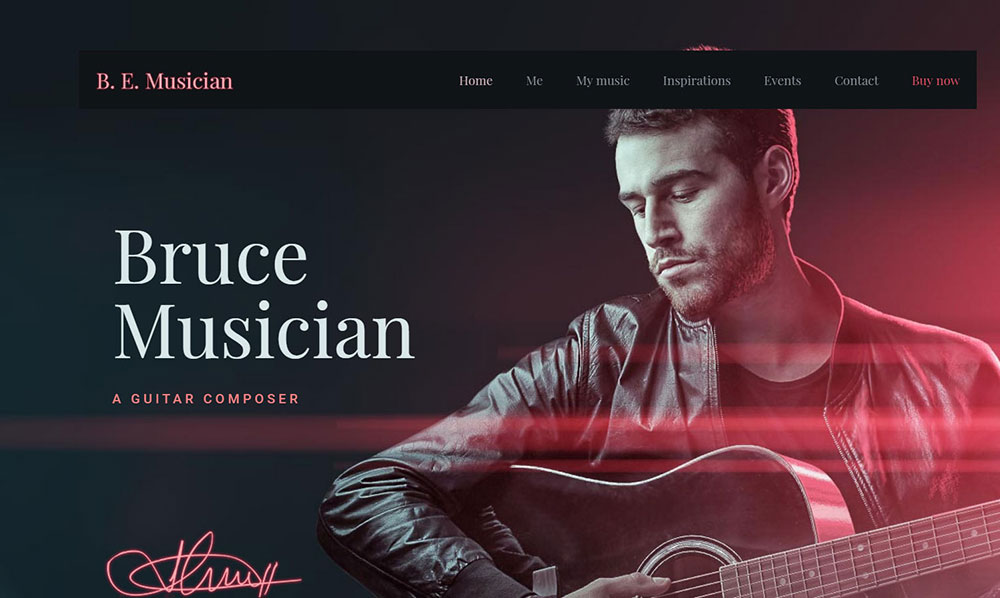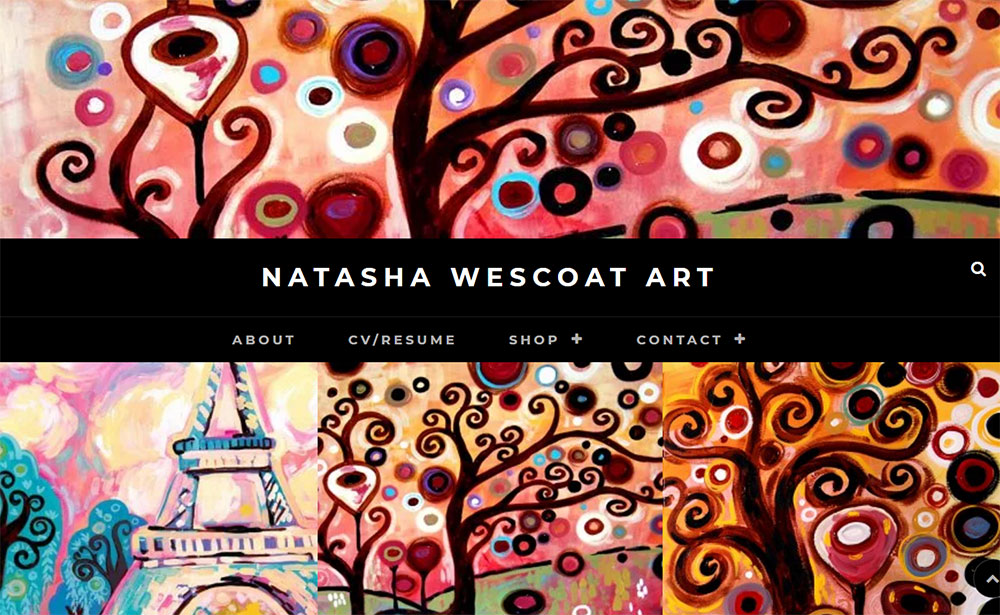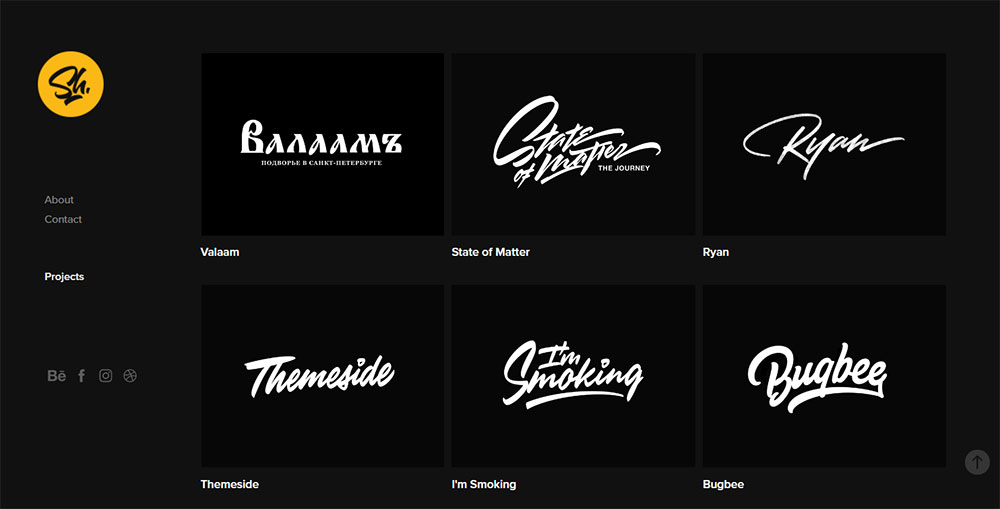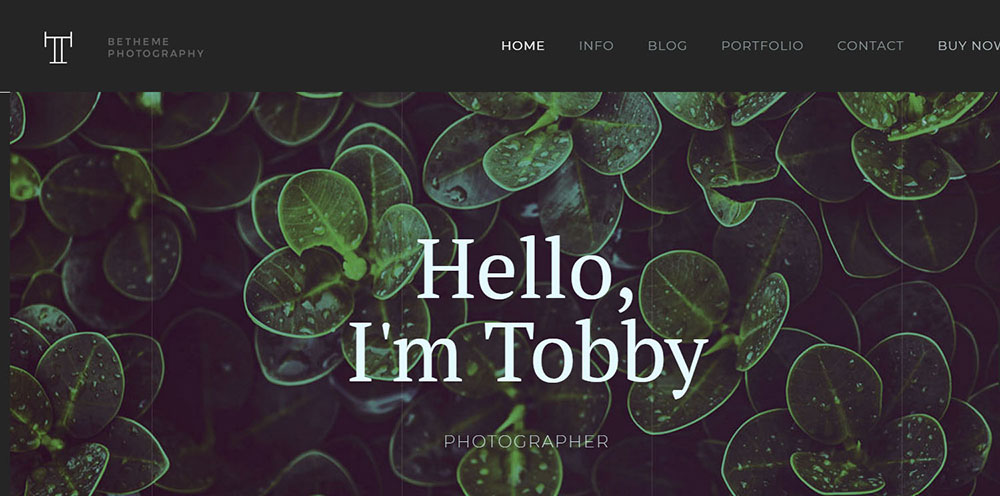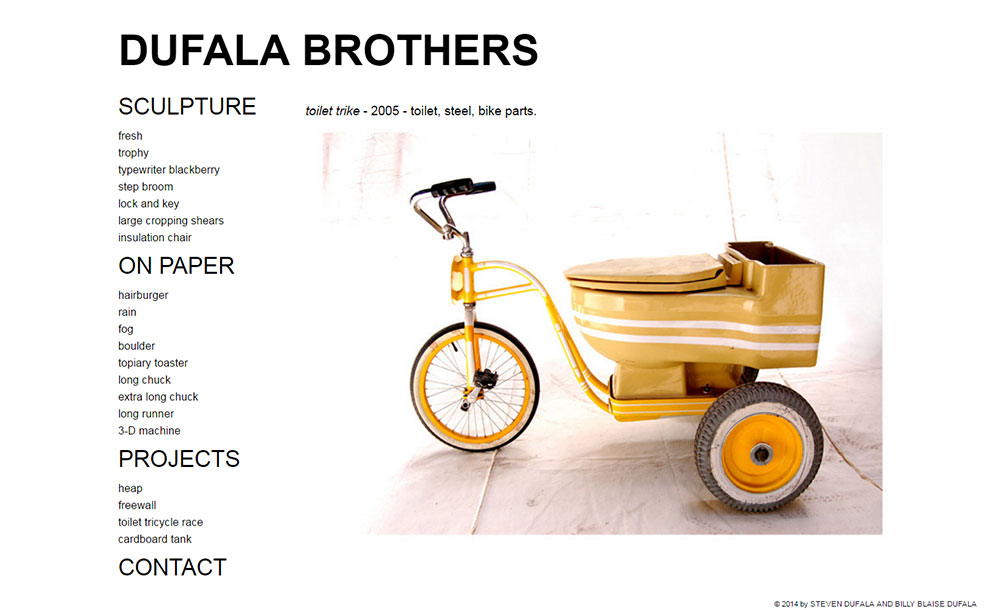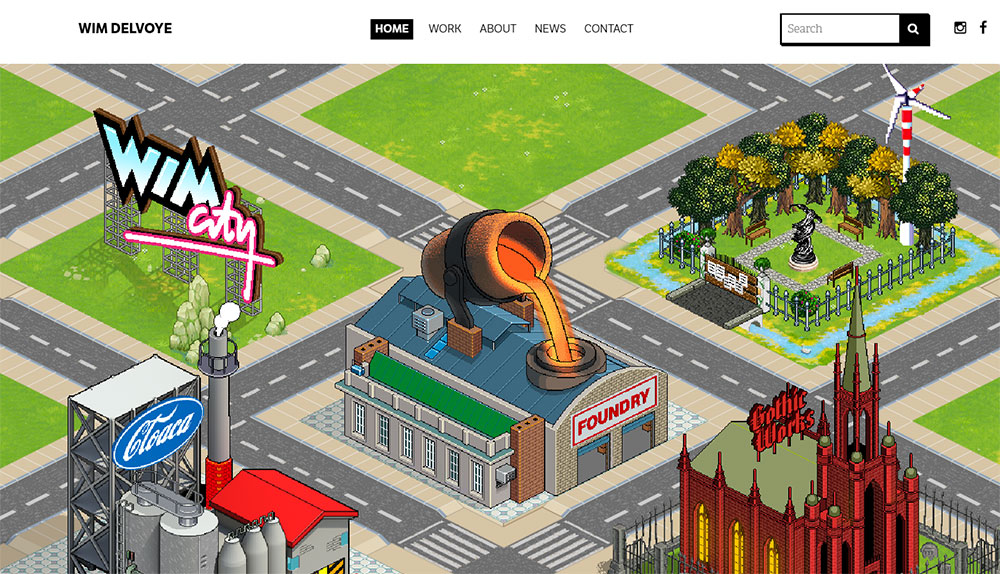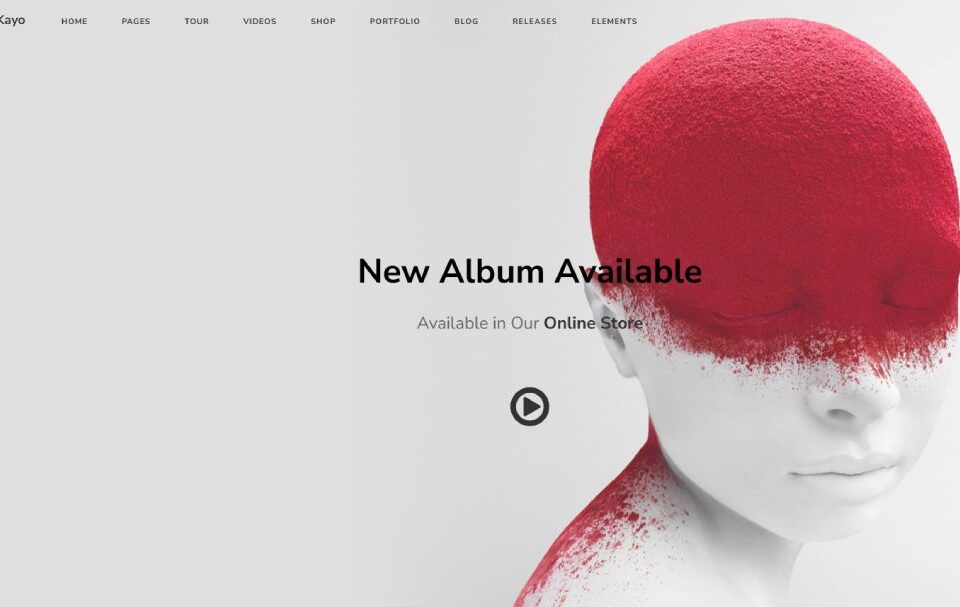
Looking for A Church Website Builder? These Are Your Best Options
October 13, 2023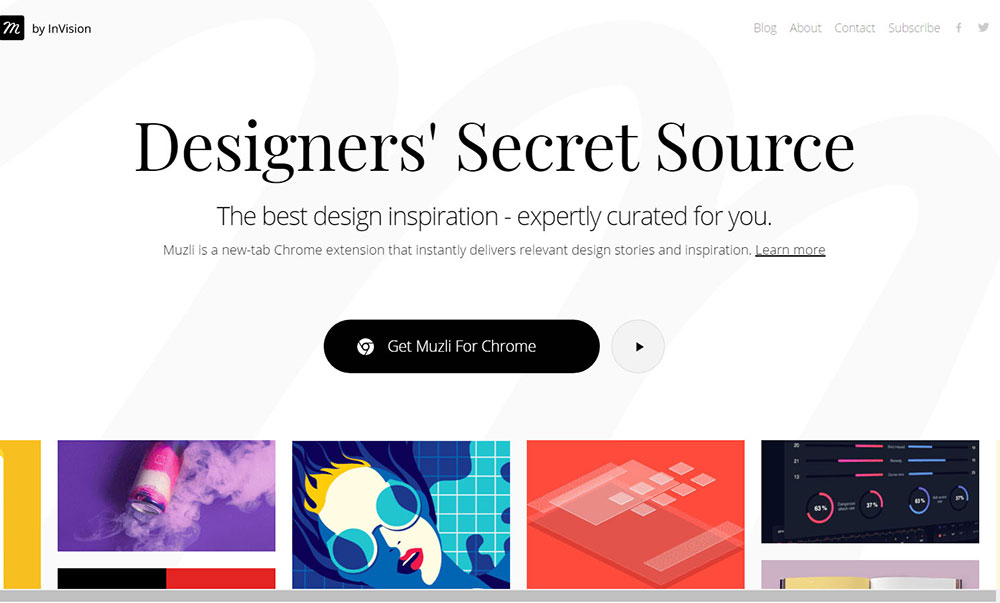
Google Chrome plugins and extensions for designers
October 13, 2023Having an online portfolio is similar to having an exhibit that is always open. Often, artist websites are the first thing that a viewer is going to see. It is like an introduction to the work of the artist. That is why it is essential that you carefully plan and design your website, enabling viewers the perfect experience.
Art websites exist since the introduction of the internet, but it is now more important than ever to have your own. It doesn’t matter what kind of art is your passion; having an online portfolio enables you to reach out to a wider audience.
The artist website examples
Many artists have their websites and social media channels. While no one can say what the best sites for artists are, we’ve gathered some of the most interesting you can find online:
Amber Jean
Ann Rea has a simple, modern art website. The sole focus is her art and nothing else. The visitors can easily check out her work and visit the shop to buy something they like.
Ann is a painter that was quoted by the Fortune Magazine and she now helps other artists become successful through business savvy.
BeProfile
April’s specialty is charcoal drawings. She usually draws animals, with bees being her favorite. Her website is minimalistic – the homepage has one piece of art and a few words. However, this approach works, because it invites the visitor to explore the site further.
She is not only a magnificent artist, but she also cares about nature. A portion of the sale of every drawing that features bees she donates to pollinator research and conservation society.
Austin Kleon
A concept illustrator, painter and brand designer, Charles Bongers is known for his work for some of the biggest companies in the world.
Of all the artist websites, Bonger’s is a true statement of his work. When the site loads, you immediately see that this is a portfolio of an illustrator.Menus and titles also have small illustrations. Bongers is one of the artists who is not afraid to share his political views, which is something you can see in his art.
Chris Sandlin
Guillaume is a photographer and a curator currently living in Montreal, Canada. You could see his artwork in printed and online publications, and also in expositions in London, Montreal, Sheffield and Bienne.
His website is minimalistic, with visitors being able to scroll through photos from left to right, instead of the usual top to bottom. Apart from the simple homepage, there is also a short about page and links to Instagram and Tumblr accounts of the artist.
BePainter
The website of James Turrell is a perfect example of how an online gallery should look like. There is lots of information about the author and the lifetime of work showcased in different galleries.
What sets apart Turrell’s site from other artist websites is that you can sort his work by location, date and type.
KelliBlickman
When it comes to artist websites, a great example of one is the online portfolio of Kelli Blickman. Simple, beautiful and easy to use, it gives the visitors all the necessary info in just a few clicks.
Blickman is a multi-media artist and a peace activist, living near Woodstock, NY. She is the founder and director of Youth Mural Arts and the CEO of 11:11 Style.
Kelly Rae Roberts
Kelly is a former social worker who is now an artist. The website is colorful and happy, just like the artist it is representing. She aims to inspire women artists around the world to believe in themselves.
She is now one of the most successful self-taught artists in the world, with $10 million worth of art sales in just three years.
BeArtist
Lori Mcnee is an artist inspired by nature, specialized in landscapes, still life and encaustic wax paintings. She owns one of the art websites that is also used to showcase and sell her art.
She also has a blog separated from the main website, where she shares fine art tips with visitors.
Matt LeBlanc
Matt LeBlanc has one of the more traditional artist websites on this list. The site features a big menu with many pages, from the about page to the online shop.
Matt never went to art school, meaning he has a pure talent for painting. His work is unorthodox, with lots of colors and shapes.
Melissa Smith
An illustrator and a graphic designer famous for humor-themed artwork and minimalist illustrations. She draws inspiration fromgraphic novel art, pop culture and clean typography.
Illustrators usually have the most exciting artist websites, and Rebecca’s is no different. The site is minimalistic with a focus solely on her work.
Sergey Shapiro
Sergey is a graphic designer and a calligrapher. He likes to use his skills in various types of graphic design. He works with many companies around the world on designing logos, packages and brand identities.
His website is a true online portfolio. It features logos and calligraphy in white on black background.
Shantell Martin
Shantell has many talents, but she mostly creates clothes, large scale and performance art. She was born in the UK but has moved in New York, where she collaborated with Kendrick Lamar and Puma.
Her website represents her as an artist completely. She likes viewers to be part of the creative process,which is something you experience once you open her site.
BePhotographer
Tauba Auerbach has one of the unique artist websites there is. When you open the site, the first thing you see is her name written in an eccentric font that changes color when you hover your pointer over it.
When you get past that, you only see a small menu in the same font. Apart from that, the website only serves as a portfolio with minimal information about the artist.
The Dufala Brothers
Wim Delvoye is a multimedia artist and has a website that perfectly captures the essence of his art. “Wim City” is the name of the virtual town, the site is based on the Sim City video game.
If you want to explore the portfolio of the artist, you’ll have to explore the town. Clicking on the farm or the football field will lead you to the artwork.
FAQ on artist websites
How do I start building my artist website?
Ah, the age-old question! So, you're diving into the digital realm, huh? First things first, you've gotta choose a platform. Think WordPress, Wix, or Squarespace. They're user-friendly and designed for folks who might not be tech wizards. Next, grab a domain name that represents you. Your name or your art brand works wonders. And then? Dive into designing! Remember, your site is like your online gallery. Make it shine!
What should I include in my portfolio?
Alright, here's the deal: Your portfolio is your digital showcase. So, you wanna include your best pieces, but also a range of your work. Show your versatility! Include high-quality images, and maybe even a little backstory or inspiration behind each piece. And don’t forget to update it regularly. Art evolves, and so should your portfolio.
How often should I update my website?
You know, it's kinda like when you rearrange furniture in your living room. Every once in a while, you need a refresh. I'd say, at the very least, every few months. Add new artwork, blog posts, or even tweak the design. Keep it fresh and engaging. The internet moves fast, and you don't wanna be left in the digital dust.
How can I drive traffic to my artist website?
Ah, the million-dollar question! SEO is your friend here. Optimize your site with relevant keywords, like "contemporary art" or "abstract paintings." Share your site on social media, collaborate with other artists, and maybe even start a blog. Engaging content can pull folks in. And hey, don't shy away from some online ads if you've got the budget.
Should I sell my art directly from my website?
Why not? If you're comfortable with it, go for it! Having an e-commerce section can be a game-changer. It gives fans and art lovers a direct way to support you. Just make sure you've got a secure payment system in place and a plan for shipping or digital delivery.
How do I price my artwork online?
Pricing, oh boy, that's a tricky one. You wanna be fair to yourself and your audience. Consider the cost of materials, the time you spent, and also research what similar artists are charging. And remember, it's okay to adjust as you go. Your art's value might grow over time!
What about copyright issues?
Protecting your art is crucial. Watermark your images, and include a copyright notice on your site. You might also consider registering your work for added protection. And if someone does use your art without permission? Well, it's time to have a chat or seek legal advice.
How can I engage with my audience through my website?
Engagement is the name of the game! Start a blog, share behind-the-scenes content, or even host virtual art classes. Encourage comments, feedback, and sign-ups for newsletters. The more you interact, the more your audience will feel connected to you and your art journey.
Do I need a blog on my artist website?
You don't need one, but it can be a fantastic tool. A blog lets you share your process, inspiration, and art journey. It's also great for SEO. If you enjoy writing and sharing, I say go for it! It adds another layer to your online presence.
How do I handle negative feedback or criticism?
Oof, this one's tough. But remember, art is subjective. Not everyone will get or love what you do. Take constructive criticism to heart, learn from it, and grow. But if it's just plain negativity? Brush it off and keep creating. Your art is your voice, and it deserves to be heard.
